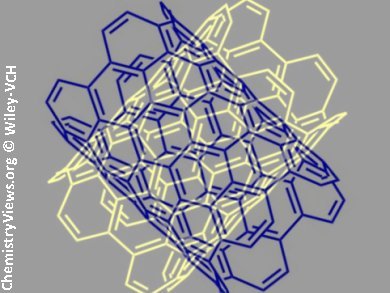Nanotubes, nanostructures characterized by an internal cavity, are attractive tools in numerous fields, such as biomedicine and electronics. As cyclic peptides (CPs) are able to self-assemble into nanotubes, they are often used as building blocks. Nevertheless, CP-based nanotubes suffer from limited solubility and functionality, and thus have restricted applications.
This issue prompted Maarten Danial, University of Sydney, Australia, and colleagues to synthesize a novel type of nanotube. By using a two-step convergent synthetic approach, the researchers attached CPs containing eight alternating D- and L-amino acids to two different polymeric chains. By doing so, the scientists obtained hybrid nanotubes consisting of a CP core surrounded by a polymeric external shell. As the two different polymeric chains mix and demix, the nanotube’s external shell assumed two different faces, one where the polymeric chains are mixed and the other one where the polymeric chains are demixed.
The new nanotubes, named Janus because of this feature, were able to assemble as artificial pores in lipid bilayers, such as those constituting cellular membranes. Janus nanotubes could thus be used to deliver small molecules or drugs inside the cells.
- Janus cyclic peptide–polymer nanotubes,
Maarten Danial, Carmen My-Nhi Tran, Philip G. Young, Sébastien Perrier, Katrina A. Jolliffe,
Nat. Commun. 2013.
DOI: 10.1038/ncomms3780




DNA structure inside a test-tube presented to a baby(representing Christ the reason for the season)